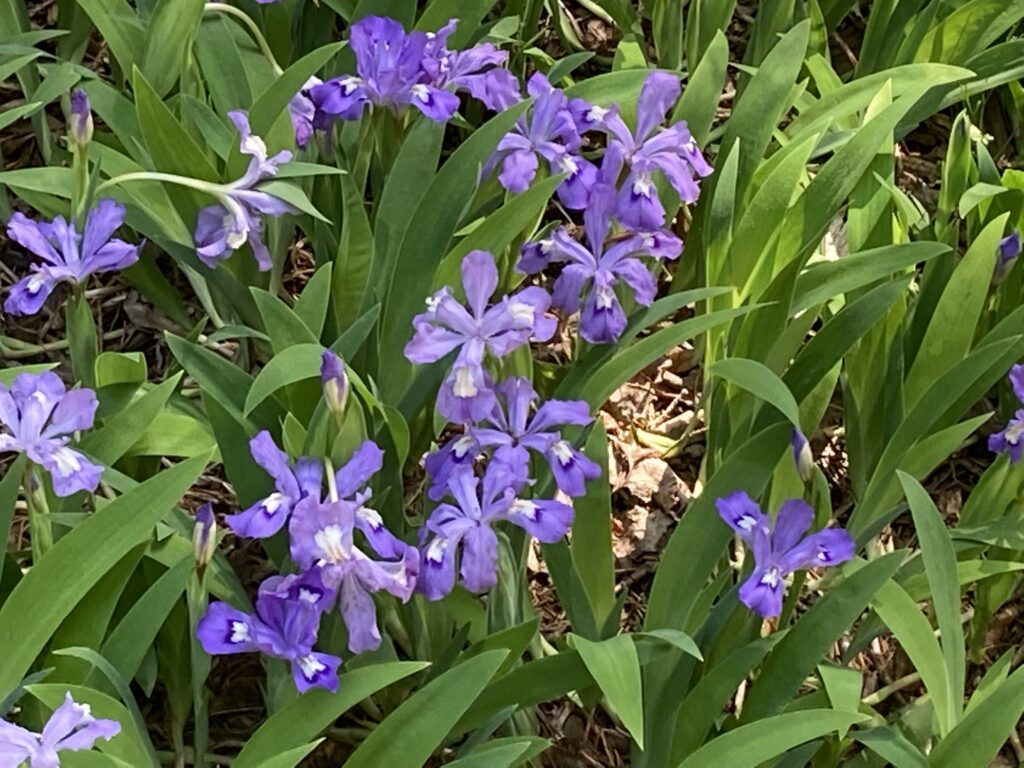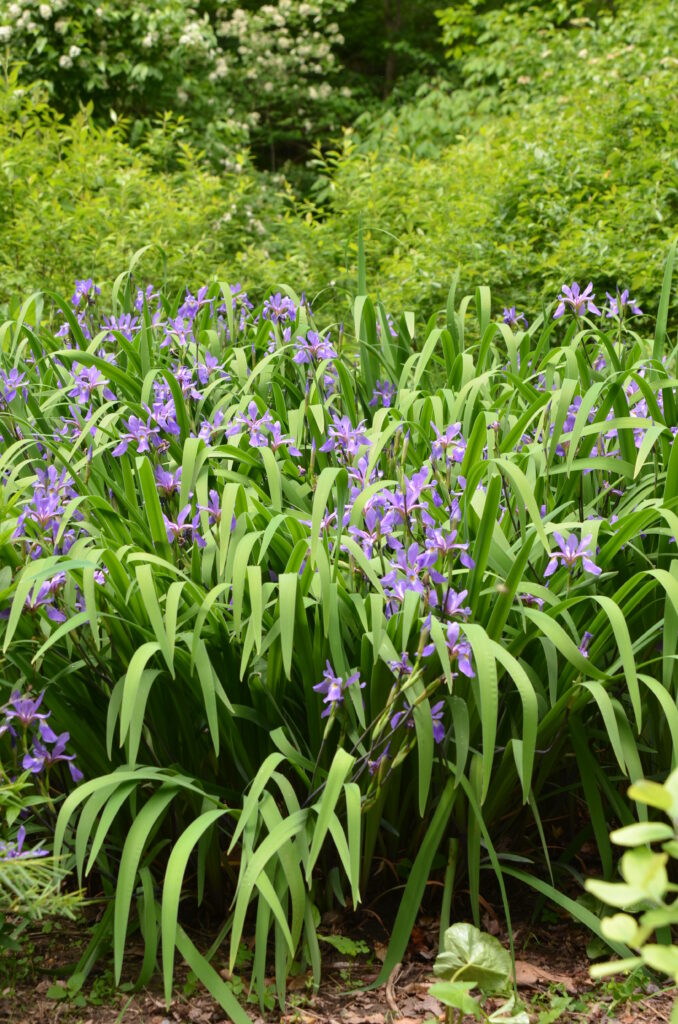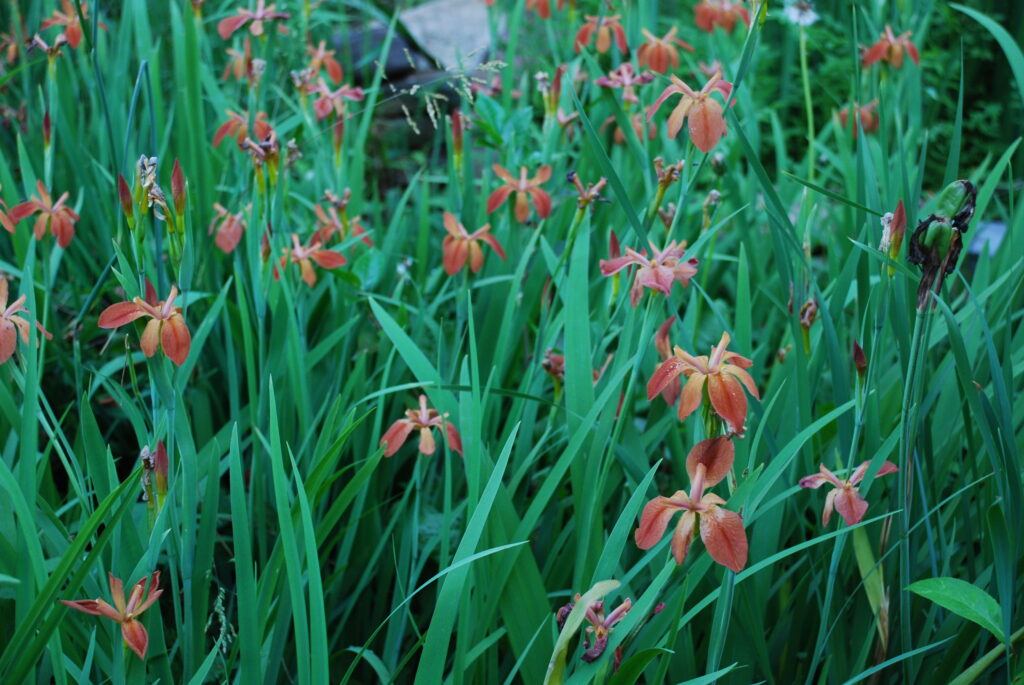In the World of Iris, U.S. gardeners are highly partial to planting Siberian (Iris sibirica) and German (I. germanica) irises. Currently, in recent years there has been a sway to our native species called “flag irises”.
Top of the list is Crested iris (I. cristata), a low-growing, rapidly spreading species that typically 3-6 inches tall. In the wild, crested iris is found in moist humus-rich woodsy soils from Maryland and Ohio south to Georgia and Oklahoma. Flowers have reclining standards and drooping falls. Favorite varieties are Abbey’s Violet (deep blue violet), ‘Alba’, ‘Tennessee White’, ‘Eco Little Bluebird’, and ’Shenandoah Skies’. (zones 3-8)

Northern blue flag iris (I. versicolor) is native from Newfoundland and Manitoba south to Virginia and Minnesota. This iris thrives in either wetland or terrestrial habitats. Clumps of narrow, arching-to-erect, dark purple-green foliage (to 24-inch long & 1-inch wide) emerge in early spring. In late spring, dark purple foliage gradually fades to green. Flowers arise atop 30-inch-high stalks in late spring, each stem bearing 3 to 5 blue-purple flowers (to 4-inch wide) along with bold purple veining. One to try: ‘Purple Flame’. (zones 3-8)

Southern blue flag (I. virginica) is a wetland species native to coastal locales from Virginia to Louisiana; a clump growing iris on 2 to 2.5 feet tall stems bears non-fragrant blooms with light blue to purple standards and crested yellow – white falls in late spring. ‘Contraband Girl’ is a vigorous tetraploid with blue-purple flowers and lush wide foliage. (zones 4-9)
Copper iris (I. fulva) hail from the Midwest U.S. and south into Georgia and grows in average moist soil. Flat-topped, 3-inch wide, beardless flowers form on 2-3 feet tall stalks and bear unusual rich brownish (coppery) blooms. (zones 6-9)

Slender blue iris (I. prismatica) grows in boggy soils from Maine south to Georgia. The narrow upright foliage forms rhizomatous clumps topped with lovely narrow-petaled blue-violet flowers in early May. The floral falls (petals) display a nice central whitish pattern. (zones 4-8)
Lamance iris (I. brevicaulis), native to the central U.S., grows in marshy humus-rich wet soil in full sun to light shade. It is recognized for its long zig-zag stems. Foot high stalks support 3–6 blue flags, each 1-3-inch wide and a variable range of blue -purple hues. (zones 5-9)
Rocky Mountain iris (I. missouriensis) resembles Siberian iris (I. sibirica) with narrow strap-shaped leaves to 20 inches long. Each branched stem holds 2 to 4 blooms in early summer. The beardless flowers have short, pale to deep blue or lilac-purple standards and larger falls with deep purple veining; grows in medium-wet average soil. (zones 3-8)
Available Sources:
Broken Arrow Nursery, brokenarrownursery.com
Far Reaches Farm, www.farreachesfarm.com/default.asp
Izel Native Plants, www.izelplants,com
Plant Delights Nursery, Raleigh, NC www.plantdelights.com

 Posted in
Posted in 
